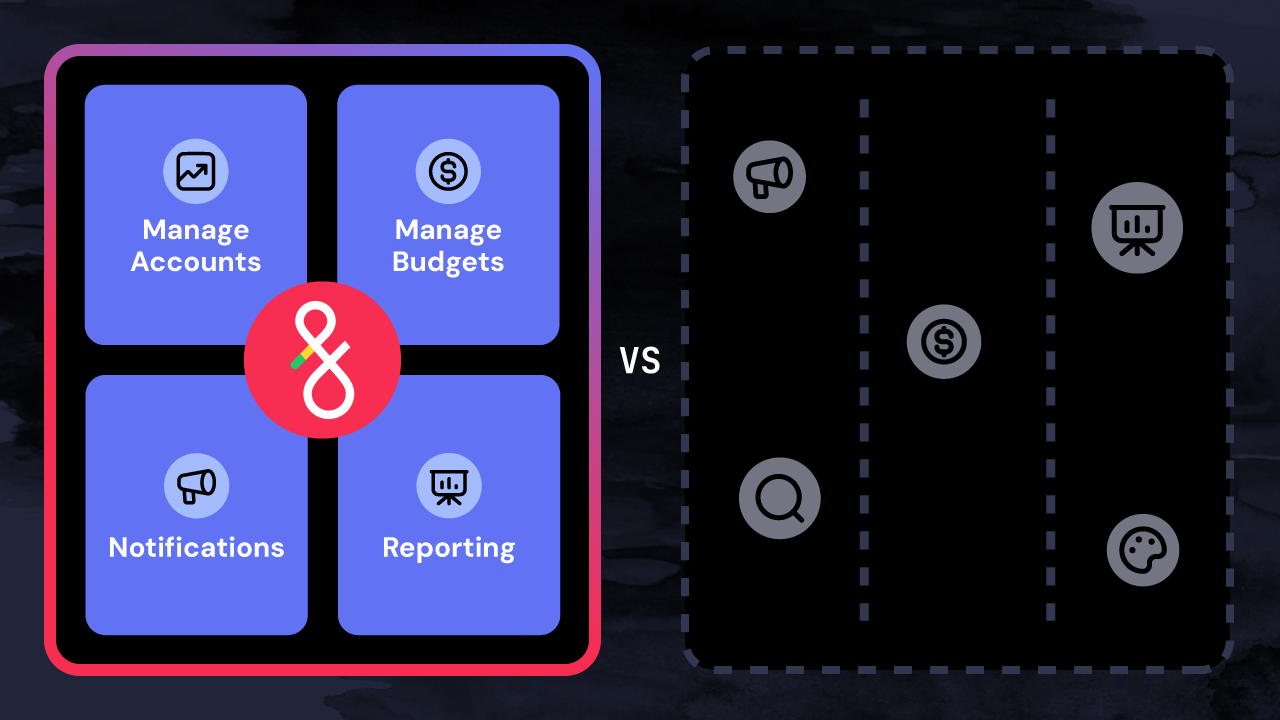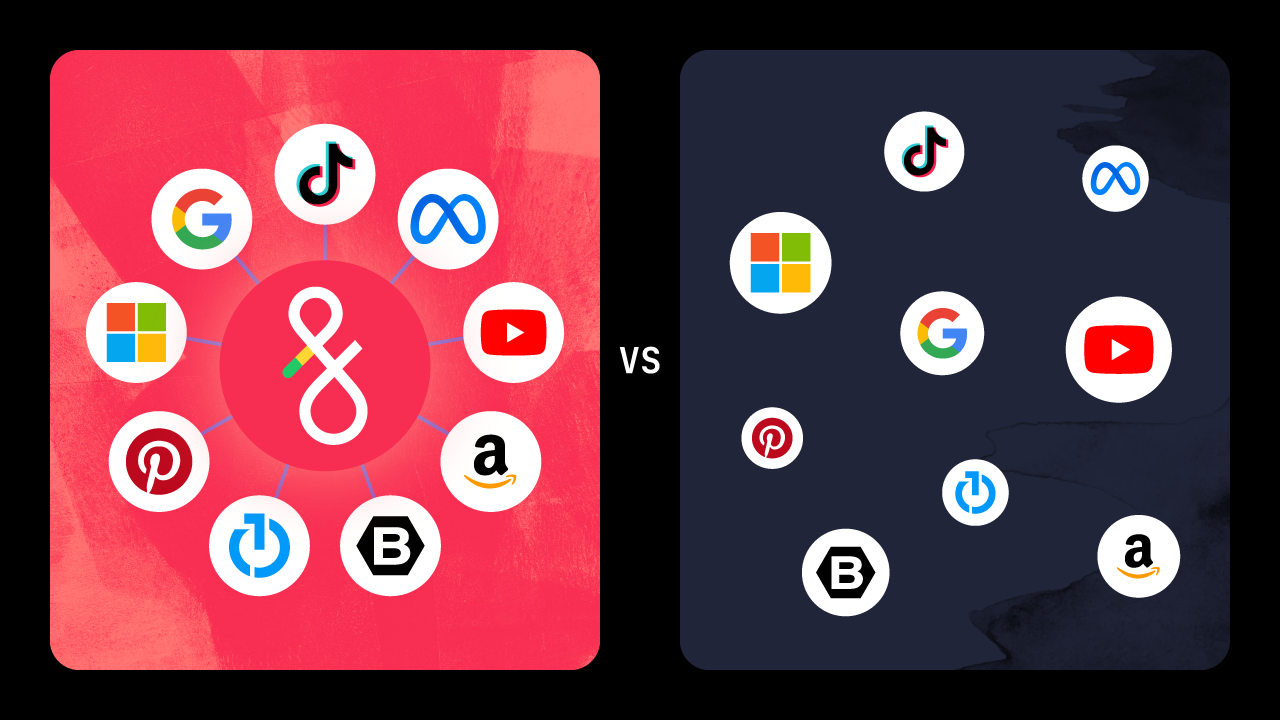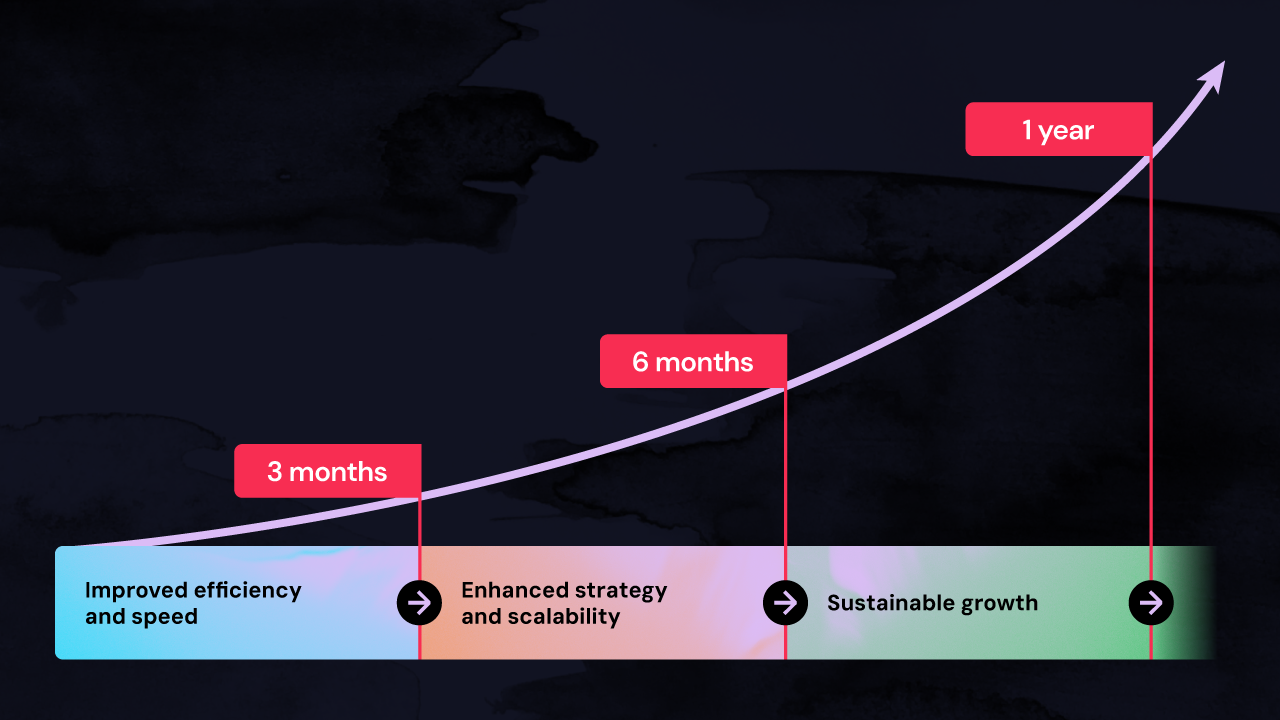One of the most frequently asked questions we received from our recent Ad Age webcast was “If I deploy automation from the ground up. What roles go away? What new roles are needed?”
Implementing automation signifies a substantial transformation. At Fluency, we understand the complexities historically associated with this large of an operational change and how it alters the duties and roles within established advertising teams. This article aims to clarify any misunderstandings and demonstrate how automation simplifies the processes of ad creation, deployment, and optimization. Through automation, teams can ultimately dedicate more time to strategic planning rather than being bogged down by repetitive tasks. Let’s explore further.
The role of automation in transforming the digital advertising landscape
In the fast-evolving landscape of digital advertising, automation has started to play a pivotal role, transforming the dynamics of how ad teams operate. This transformation elevates strategists to a key position in the decision-making process, leveraging the hours gained from automated reporting to conduct in-depth analysis of campaign outcomes and market tendencies. This, in turn, grants creative teams greater freedom to explore and innovate, supported by the ability to quickly test and modify advertisements through automation. At the same time, ad strategists are able to offer enhanced value to their clients by delivering insights rooted in data—thereby increasing customer satisfaction and solidifying more robust partnerships. In essence, automation lifts team members to higher-value roles, pivoting their contributions from mundane tasks to those that require a higher degree of strategy, analysis, and creativity.
“What processes can be automated vs. automatable with human oversight when it comes to ad ops?”
Another frequently asked question during the Ad Age webcast revolved around the delineation between processes in ad ops that can be fully automated and those that require human oversight. Ad ops encompasses a wide range of activities—with certain tasks being prime candidates for automation due to their repetitive and data-heavy nature—whereas others benefit significantly from the nuanced judgment and creativity that only your strategists can offer.
Fully automatable tasks
To stay competitive in the fast-paced world of digital advertising, leveraging automation tools has become a necessity. These advanced solutions bring about a transformation in how campaigns are managed, budgets are allocated, and customizations are applied across various platforms. Here are just a few of the key benefits that automation brings to digital advertising:
- Automate ad management: With the right solution, ad management is revolutionized through centralization of key channels and automation of repeatable processes, significantly reducing account launch times by up to 90%, optimizing multichannel campaign management via a single interface, streamlining workflow, and enhancing portfolio outcomes with scalable issue resolution and 24/7 monitoring and alerts.
- Optimized budgeting and pacing: Effortless budget management is possible by using automation to eliminate overspend and underspend. Automating this task alone can save teams upwards of thousands of hours through automated bidding and real-time alerts for error correction. Automation also enables teams to be proactive in budget allocation through pacing tools that allow them to receive instant recommendations and forecasts, cutting down on tedious account maintenance and enabling bulk portfolio management.
- Scalability and precision in campaign customization: Automation empowers organizations to unlimit their capacity to deliver customized ads to precisely targeted audiences at scale. With tools such as Fluency Blueprints, agencies can create an infinite number of localized campaigns that maintain compliance and brand consistency. Furthermore, tools such as Fluency's CoLab simplify the complexities of agency-client interactions, including communication, onboarding, change requests, and performance reviews, thereby enhancing overall efficiency and strategic execution.
Automatable with human oversight
While automation can significantly enhance operational efficiency and accuracy in several domains, certain tasks benefit from automation but critically require human oversight to ensure quality, ethical standards, and strategic alignment. Here’s a couple of examples:
- Decision making in complex scenarios: Automated systems can provide data-driven recommendations, but humans need to oversee these decisions, considering ethical, cultural, and nuanced factors that machines cannot fully understand. A practical application could involve an automated system suggesting to decrease ad spend in a region showing low engagement. The strategist would then need to consider if the low engagement is due to the ad content not resonating with the local culture, or if external factors, such as a major local event, are temporarily affecting the engagement. They might decide to adjust the campaign’s creative elements rather than cutting the budget, based on their understanding of cultural nuances.
- Data analysis for strategic insights: While automated systems can process large volumes of data, human analysts are needed to interpret nuanced trends, anomalies, and strategic implications that require contextual understanding. When automated systems flag a sudden spike in engagement from a demographic not previously targeted, an analyst would look into whether this trend represents a genuine market opportunity or is an anomaly, like a viral social media challenge inadvertently driving traffic. They would consider the brand’s position and whether pursuing this new demographic aligns with long-term strategic objectives.
- Compliance and ethical oversight: Automated processes must be routinely checked by humans to ensure they comply with evolving legal standards and ethical considerations, especially in sectors like finance and healthcare. If automation suggests targeting a healthcare ad campaign towards individuals searching for certain medical terms, the strategist must ensure that targeting complies with healthcare privacy laws and ethical standards. They would validate the automated suggestions against current legal guidelines and ethical considerations, ensuring that the campaign respects user privacy and sensitivity surrounding health issues.
Tasks to stay with people
The blend of AI and human creativity plays a pivotal role in shaping the effectiveness of today’s ad campaigns. While AI brings efficiency and data-driven insights to the table, certain aspects demand the irreplaceable touch of human innovation and empathy, including:
- Client relationship management: AI can handle routine inquiries, but human intervention is necessary for complex issues or when empathy and understanding are crucial. Furthemore, the personal touch in understanding client needs, maintaining relationships, and crafting bespoke advertising solutions remains a skill unique to humans.
- Content creation: Although there are advances in AI-generated content, truly engaging, original content that captures a brand's voice and ethos still relies heavily on human creativity.
These distinctions highlight the synergy between automation and human expertise in the domain of ad ops, ensuring both efficiency and quality in advertising processes.
Timeline for organizational transformation through automation
Implementing automation within an organization demands a structured and strategic approach, carefully coordinating the evolution or emergence of specific roles during the transition to ensure smooth integration and maximize benefits. Below is a high-level outline of what ad ops leaders should be looking for in any change management partner.
Phase 1: Requirements and Scoping: Change management at each organization will be unique based on team structure, stakeholder opinions and complexity of their service model. Phase 1 should focus on mapping out these unique requirements to form a comprehensive change management plan. Activities at this phase would include stakeholder demonstrations, process mapping and technical discussions.
Phase 2: Custom Implementation Plan: Tailored strategies are crucial. Dedicating time to crafting a plan will prime your automation champions for success, ultimately dividing the strategy into manageable phases. This will also ensure a seamless flow from data ingestion and partner connections to feature accessibility and comprehensive team training.
Phase 3: Trusted Framework: For Phase 3, it’s important to start getting a feel for your automation platform by focusing on data availability and feature access. This can include ingesting account data and polling data, as well as gaining a better understanding of reporting and budget management capabilities.
Envisioning the future - optimizing your team for success in the aftermath of automation deployment
After deploying automation, there may be an opportunity to rethink team operations and job descriptions. Although the timeline can differ from one organization to another, businesses are expected to start realizing automation's value within the first year, leading to a reevaluation of roles and operational functions.
In a recent use case, a top automotive digital advertising agency underwent significant restructuring to capitalize on the benefits it was gaining from automation. Through the adoption of automation, the agency has effectively established an internal role dedicated to implementing customized campaign adjustments on a large scale. This strategic move significantly lowers the time required for account management and diminishes the necessity for increasing their internal staff size. Consequently, this approach results in the company saving several hundreds of thousands of dollars each year. This serves as a compelling example of automation's impact, showcasing the agency's strategic adaptation to leverage automation effectively.
Looking to embrace automation? Fluency can help
The integration of automation is not just a trend—it's a revolutionary shift that reshapes the entire landscape of advertising operations. As the digital advertising landscape continues to evolve, the synergy between automation technologies and human creativity will undoubtedly be the keystone of successful advertising strategies, ensuring that organizations not only survive but thrive in this dynamic environment. At Fluency, we've seen firsthand how automation can enhance efficiency, foster creativity, and elevate the strategic importance of ad teams.
By clearly delineating tasks that can be fully automated from those that benefit from the human touch, we empower teams to focus on areas where they add the most value. The transition to automation may appear daunting, but with a strategic approach and careful planning, organizations can undergo this transformation smoothly, reaping the benefits of increased productivity and enhanced strategic insight. Book a personalized demo to learn more.






